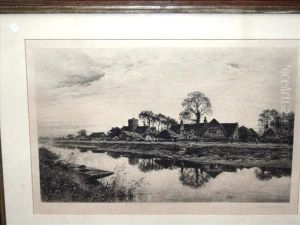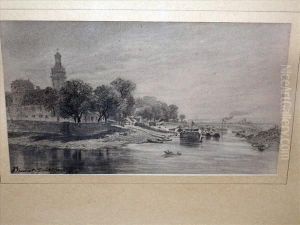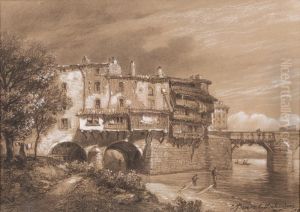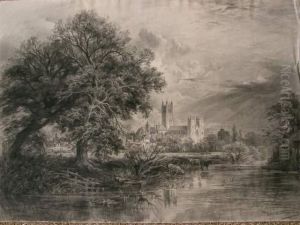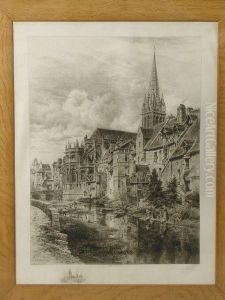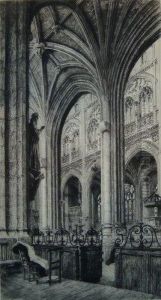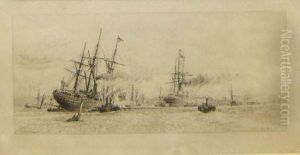Alfred Louis Brunet-Debaines Paintings
Alfred Louis Brunet-Debaines was a French artist born in 1845 in Saint-Omer, Pas-de-Calais, France. He was known for his work as an etcher and watercolorist, specializing in architectural views. Receiving his training in art in his home country, Brunet-Debaines developed a keen interest in capturing the essence of urban landscapes and historical buildings.
In the early stages of his career, he was influenced by the Barbizon school, a French art movement of the mid-19th century that emphasized the beauty of rural and natural scenes. However, Brunet-Debaines's primary focus remained on the architecture and cityscapes, areas in which he excelled and for which he is best remembered.
During the 1870s, Brunet-Debaines moved to England, where he found a receptive market for his works. He produced a series of etchings that depicted well-known British landmarks, particularly the cathedrals and ancient buildings, showcasing his precise and delicate etching technique. His works were appreciated for their accuracy and attention to detail, and they were sought after by both British and French collectors. This period was marked by a fascination with Gothic revival architecture, and Brunet-Debaines's work resonated well with the aesthetic preferences of the time.
He collaborated with other artists such as Axel Haig and was active in the artistic community, contributing to various publications and exhibitions. His etchings were often featured in magazines and periodicals, which helped to further establish his reputation as a master etcher.
Brunet-Debaines's work is characterized by its fine line work and subtle gradations of tone, which created a sense of volume and texture in his depictions of stonework and masonry. He was also adept at capturing the play of light and shadow, which added a dramatic effect to his compositions.
Despite his success in England, Brunet-Debaines maintained strong ties to France and continued to exhibit his work there. He was awarded medals at the Paris Salon, an official art exhibition of the Académie des Beaux-Arts in Paris, which was a significant recognition of his artistic achievements.
Alfred Louis Brunet-Debaines died in 1939, leaving behind a substantial body of work that continues to be of interest to collectors and historians of etching. His etchings remain an important resource for the study of 19th-century European architecture and contribute to the legacy of printmaking in the art historical canon.
